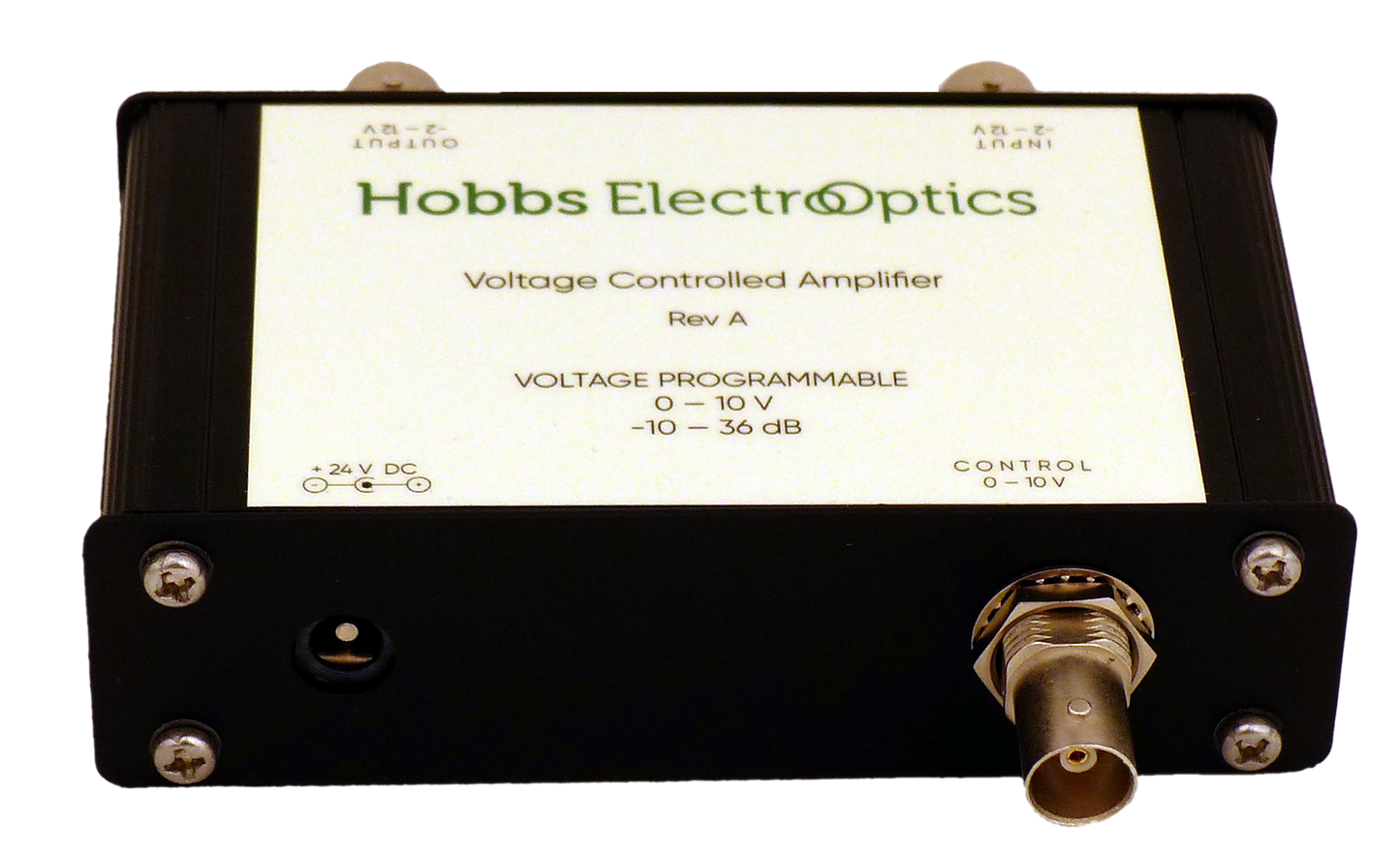Hobbs ElectroOptics
VP64 Voltage-Programmable Gain Amplifier
VP64 Voltage-Programmable Gain Amplifier
Couldn't load pickup availability
Voltage-Programmable Gain Amplifier
Voltage-controlled amps (VCAs) are everywhere. Their primary use is extending the dynamic range of A/D converters, so that we can preserve the dynamic range of our measurements, They mostly work great at high gain; however, there's something their makers don't tell you straight out: they're horribly noisy at low gain, so our SNR gets trashed.
The reason is that the variable-gain element they use is the transconductance of a BJT differential pair, which can handle only about ±50 mV, maximum. If the output range is ±10 V, the fixed-gain part runs at a gain of about 200. Thus in order to make a gain of 2, say, the typical VCA attenuates the signal by a factor of 100, and then multiplies it by 200. Mathematically this is fine, but in electronics, a lot of noise gets added in the process, costing typically 30 dB of SNR at higher signal levels.
Our VP64 Voltage-Programmable Gain Amplifier provides gains from 0.125× - 64× (-18 dB - 36 dB), with almost no SNR loss in most instances. It can do this because, under the hood, it's actually a digitally-programmable gain amp (PGA) with a gain step size of about 0.05 dB, with an A/D converter reading the control voltage, and a microcontroller running the PGA to mimic the common VCA control curves: either linear in dB, or else a high-order power law that allows a solid-state detector to simulate the gain curve of a photomultiplier tube.
Using a microcontroller has two other benefits. In voltage mode, it applies a bit of hysteresis to the control, to prevent the gain jumping back and forth across a step boundary and causing noise. And as a bonus, of course, you can talk to the MCU over a USB serial connection and tell it what gain to set.
| Power | +24V DC, 100 mA max |
| Control Interfaces | Voltage & Digital Serial Control |
| Control Voltage | 0 – 10V |
| Voltage-Gain Profile | Linear in dB or Power Law |
| Output Range | -2 – 12V |
| Input Range | -2 – 12V |
| Gain | 0.125× - 64× |
| Gain Steps | 992 |
| Gain Step Size | 0.05 dB |
| Bandwidth | 2 MHz |
| Voltage Offset |
1 mV max |
| Output Impedance | 50 Ω |
Applications
- Decrease loading on high impedance systems
- Optimizing input to digitizer
- General laboratory use
- Low impedance control voltage
- Proof of concept & test systems
Ordering
For larger quantities or OEM inquiries please email us at info@hobbs-eo.com.
| Documentation |
|---|
| User Manual |
| Product Brochure |






